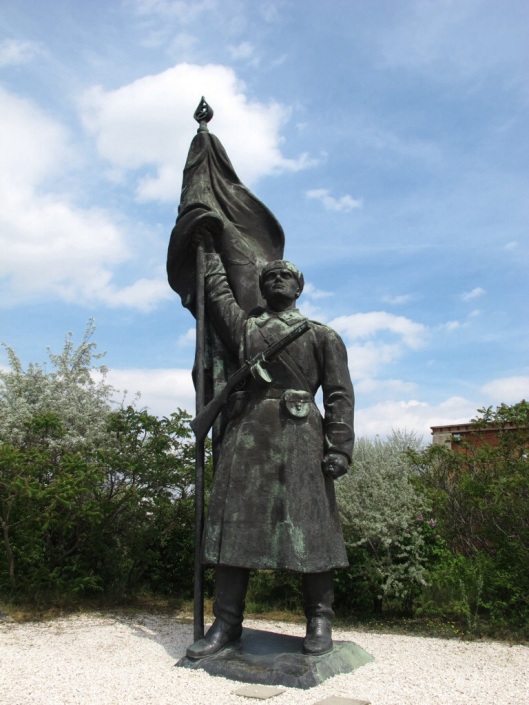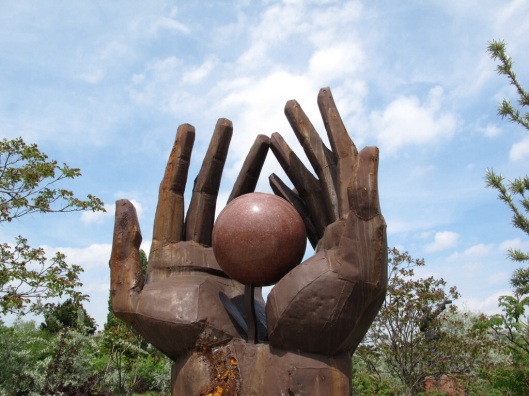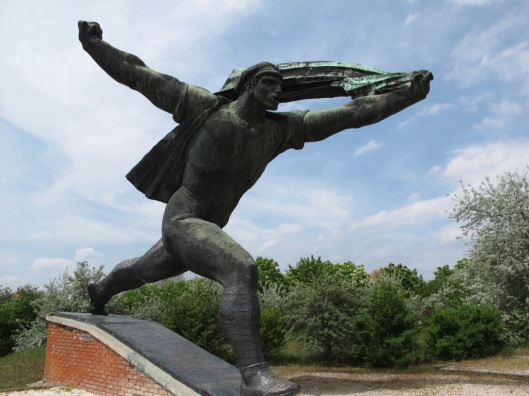Tags
Budapest, cities, communism, Europe, Exploring, history, House of Terror, Hungary, Second world war, Soviet, stalin, travel, USSR
This is a longer and more content heavy post than I would usually write, but I could not escape the fact that I felt this was something I just had to write about, and indeed have sat to write it several times to no avail, plagued by false starts…so here goes nothing.
When I first arrived in Budapest I knew nothing about the city, indeed I knew nothing about Hungary other than the fact that it was a landlocked country somewhere in Europe. The city quickly won my heart with its charms and many days were passed lazily enjoying the sunshine or strolling the streets along the Danube just enjoying the ambience of the city. The exception is the day I visited the House of Terror on Andrássy út.
As I said, I knew nothing about Hungary, or the history of the country, and the things I learnt while at this museum made my heart weep for poor Hungary and it’s generations of the dispossessed. Hungary was a country subjected to terror rule by both the extreme right of the Nazis and later the extreme left of Stalin’s communism. In the house I walked through rooms of the leaders at various times, including Péter Gábor, head of the Hungarian Political Police, who was later imprisoned by his own men. I then walked through the prison and torture cells beneath the building where Ernö Szücks the deputy head of the AVH has his own younger brother tortured, before both brothers were later beaten to death when the regime came under the influence of one Joseph Stalin. The ruthlessness of the time was shocking and tales of betrayal, intrigue, persecution and revolution were never ending.
Video interviews of survivors of the terror telling of their struggles play in a dark room mid way through the house. Many openly weep as they recall their losses and hardships, while the rest look as though they are incapable of shedding even a single tear more. The women tell of how their men were taken from them, on the understanding that they have been called to work in camps for a few weeks or a few months, and never returning home. Some were left on their own with six or more children to care for. Others lost not only their husbands but their children as well, families being reduced from numbers of eight or ten to just a lonely woman watching the road, waiting, either for the return of her family or for death.
The internment camps were only one part of the cause for such turmoil amongst the population and separation from loved ones. Deportation also played a massive role. At the end of the Second World War, Hungarian citizens with known German origins were deported in terrible conditions to Germany after a period of great persecution in Hungary, and in the end there were more than two hundred thousand of these deportees. After the extermination of so much of the Jewish population and losses during the course of the war, this was a considerable portion of Hungary’s remaining population. Czechoslovakia also expelled Hungarians from its borders, and Hungarians with Slovak roots were forced to uproot and leave. Similar scenes occurred along the border of Yugoslavia. The country was depleted and dejected. To cap it all, fifteen thousand people were ejected from the capital, only allowed to take a total of 250 kilos with them while the rest of their belongings became party property or state belongings.
Whether under the Nazis and the Arrowcross or under the strict communism of Stalin, Hungary suffered, losing men, property, resources and spirit. Stalin’s death in 1953 brought little relief. Austria signed the Austrian State Treaty in 1955, forcing all occupying troops to leave the now neutral country, and consequently Soviet troops poured into Hungary from Austria, and were able to remain there on a legal basis due to Prime Minister András Hegedüs signing the Warsaw Pact.
In February 1956 the crimes of the Stalinist era were made public and by October communism was a word that carried foul connotations. Consequently student led demonstrations broke out on 23 October, that quickly turned into revolution when the secret police opened fire on the unarmed protestors in Budapest. Prime Minister Imre Nagy who was brought into power by the Revolution succeeded in negotiating a general truce, resulting in Soviet forces beginning to withdraw from the capital. The terror inducing State Security Department was abolished and Nagy announced the abolition of the one party system and introduction of free elections. However on October 30 just two days after the declaration of truce, the USSR went back on their word and moved to crush the freedom fighters. Hungary withdrew from the Warsaw Pact and asked the UN for assistance, but too late to stop Soviet tanks decimating the resistance movement, and the city of Budapest.
There were twenty thousand wounded, two and a half thousand dead, five thousand carried off as prisoners of war including underage girls and boys and two hundred thousand fled the country. Hungary was again depleted just eleven years after the end of the Second World War. Imre Nagy and other Revolutionary leaders were executed. The last Soviet advisors did not leave Hungary until 1989 after Hungary followed Poland’s lead and voted out the now weakened Soviet Party in October.
The beauty and charm of Budapest cannot escape its dark past, indeed I think that part of its draw is owed to it. It’s a city that stands still despite all that has happened, a place that proves to be small is not necessarily to be helpless. The years of war and turmoil explain the absence of so many old buildings as seen in other old European cities elsewhere on the continent. The relics of the communist era were not destroyed, but moved out of view, put together so that the past can still be remembered, though far enough out of the city that communism cannot continue to cast its shadow.
It’s a sobering experience, but the House of Terror is definitely worth a visit when in Budapest. That one address, 60 Andrássy Út holds so much history and the history of Hungary definitely deserves to be recognised.




Long but beautifully written. It’s easy to forget the terrible things that went on in Europe as it seems so far away. I think you missed your calling – maybe you should consider a career in travel journalism 😉
LikeLike